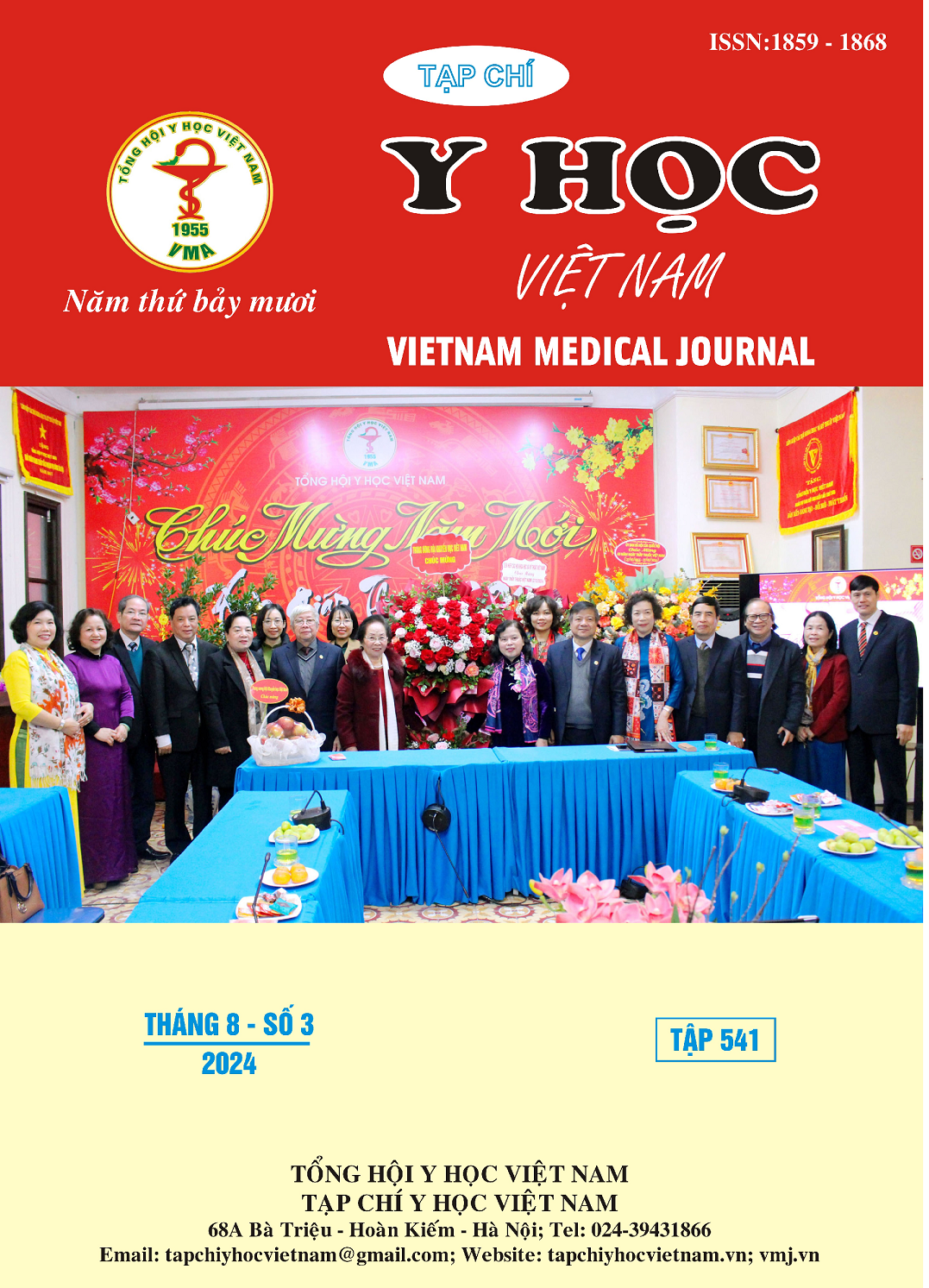ASSESSMENT OF CHANGES IN PLASMA HEPCIDIN CONCENTRATION ARFER 3 MONTHS TREATMENT ANEMIA IN PATIENTS WITH END-STAGE CHRONIC RENAL DISEASE
Main Article Content
Abstract
Objectives: To evaluate the changes in plasma Hepcidin concentration after 3 months of anemia treatment in patients with end-stage chronic renal disease (ESRD). Subjects and methods: This prospective study compares the changes in Hepcidin concentration before and after anemia treatment in 42 end-stage chronic kidney disease patients and with 54 healthy individuals matched for age and gender at Military Hospital 103 from January 2022 to December 2023. All above patients had measured plasma Hepcidin by ELISA method befor and after treatment anemia. Results: The pre-treatment Hepcidin concentration was higher than that of the control group (p < 0,005). Post-treatment Hepcidin concentration was lower than pre-treatment levels (p < 0,05). The Hepcidin concentration and the rate of Hepcidin increase in the group with Hb levels not reaching the target were higher than in the group with target Hb levels (p < 0,005). Conclusion: Plasma Hepcidin concentration is elevated in end-stage chronic kidney disease patients, and anemia treatment reduces Hepcidin levels. Increased plasma Hepcidin concentration is associated with not achieving target Hemoglobin levels.
Article Details
Keywords
End-stage renal disease (ESRD), Hepcidin, Anemia
References
2. Portolés, J., et al (2021), Anemia in Chronic Kidney Disease: From Pathophysiology and Current Treatments, to Future Agents. Front Med (Lausanne),8: p. 642296.
3. KDIGO (2012), Clinical Practice Guideline for anemia in chronic kidney disease. Kidney International, 2: p. 279-335.
4. Ganz, T. and E. Nemeth (2016), Iron Balance and the Role of Hepcidin in Chronic Kidney Disease. Semin Nephrol,36(2): p. 87-93.
5. Ueda, N. and K. Takasawa (2018), Impact of Inflammation on Ferritin, Hepcidin and the Management of Iron Deficiency Anemia in Chronic Kidney Disease. Nutrients,10(9).
6. Van der Weerd, N.C., et al (2012), Hepcidin-25 in chronic hemodialysis patients is related to residual kidney function and not to treatment with erythropoiesis stimulating agents. PLoS One, 7(7): p. e39783.
7. Rubab, Z., et al (2015), Serum hepcidin levels in patients with end-stage renal disease on hemodialysis. Saudi J Kidney Dis Transpl, 26(1): p. 19-25.
8. Ashby D. R., Gale D. P., Busbridge M., et al. (2010). Erythropoietin administration in humans causes a marked and prolonged reduction in circulating hepcidin. Haematologica, 95(3): 505-8.
9. Elbadawy A., Ibraheim W. M., Khalil M., et al. (2021). Study of serum hepcidin level and its relation to recombinant human erythropoietin resistence, markers of iron status and C-reactive protein in patients with end stage renal disease on maintenance hemodialysis. Benha Medical Journal, 38(2): 497-510.
10. Takasawa K., Takaeda C., Maeda T., et al. (2014). Hepcidin-25, mean corpuscular volume, and ferritin as predictors of response to oral iron supplementation in hemodialysis patients. Nutrients, 7(1): 103-118.


